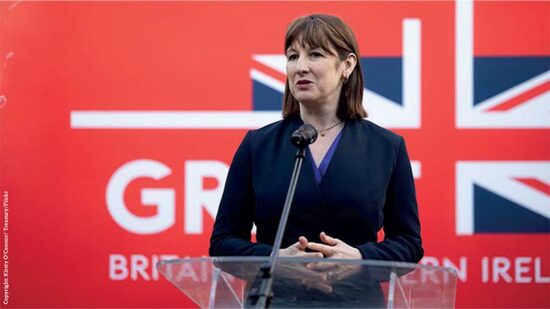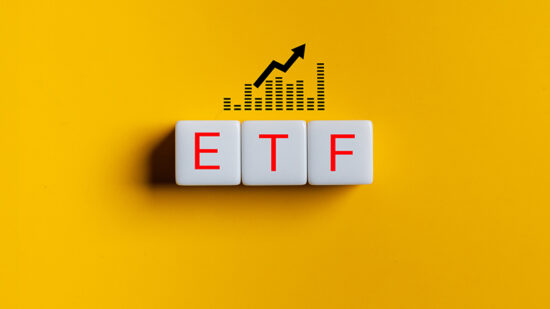Recent research from Asset Risk Consultants (ARC) has suggested most private client discretionary managers have a low exposure to gold, despite current positive sentiment towards the asset class.
According to ARC’s latest quarterly sentiment survey, within their typical ‘steady growth’ investment solution, 75% of the 83 managers who responded had either no gold exposure or a weighting of less than 2.5%. Meanwhile, no respondents had a weighting over 10%.
This lack of exposure could not be explained by managers being negative on forecast returns, according to the survey, with net sentiment towards the yellow metal positive at 35%.
So are investors right to be wary of gold, an asset class traditionally used by multi-asset funds to provide both diversification to equities and bonds, and as a balance against market volatility?
Ned Naylor-Leyland, investment manager, Jupiter Asset Management
The case for gold and the performance of it is best explained as the inverse to market confidence in holding your local fiat currency.
Gold is the central banking system’s true base currency (or numerator) and its role is as measuring stick and monetary collateral. Gold is the occulted tool that assesses the performance of sterling, dollars, euros and, yes, even Turkish lira, versus the inexorable rise in the cost of goods and services.
This hidden fact, that it isn’t gold moving but rather the dollar (and other currencies), highlights the importance of the quote attributed to J.P. Morgan: “Gold is money, everything else is credit.”
This truth explains both why central banks hold large amounts of gold in their reserves, and also why they have been buying more in the open market since the great financial crash.
Central bankers haven’t wanted each other’s paper ever since the toxicity in the system spilled forth 15 years ago; a behavioural shift that should have been obvious to all. In 2008/09, the financial sector toxic sludge of bad loans, ultra-loose lending practices and systemic derivative risk moved from private institutions (investment banks) onto the public balance sheet. This led creditor nation central bankers to quietly dispose of US treasuries and buy more gold.
In terms of the current investment picture that emerges and opportunities that lie ahead, the fact that the dollar gold price has just broken out again above $2,500 (£1,905)/oz to new all-time highs says a great deal about how the dollar/gold relationship is now rapidly changing.
This dollar-gold breakout in 2024 finally gives gold positive momentum and a technical tailwind. It infers that financial sector investor capital can soon follow the behaviour of the central bankers themselves and start to flow in a meaningful way towards monetary metals and even the associated mining equities that offer both value and optionality.
Our view is that silver represents the best bang for the buck in the monetary metals space owing to its extremely bullish supply/demand fundamentals. Indeed, we also suggest that due to momentum for the underlying metals and expanding operating margins it is finally time to look at gold and silver mining equities again as an equity subset that offers value and geared optionality to rising spot prices over the years ahead.
Silver and the miners are higher-beta expressions of the trending direction of the dollar-gold price and have lots of potential to outperform gold when investor behaviour shifts away from long-held allocations to technology and even the 60/40 model itself.
We think the risk-reward in silver and the miners looks attractive at this moment in time, in light of both the fraught macro picture and the very low free cashflow and net asset value multiples the miners are trading on at present.
The best time to buy gold, silver and the miners historically has been when the Fed (or your local central bank) switches from hawkish to dovish. Our view is that such a moment is upon us and that we could also finally see an asset allocation move towards the sector due to issues with the 60/40 model and the need for an equity sub-sector that is doing well when many others aren’t.
Gold and silver mining equities reflect shifts in gold and silver prices, driven by US real interest rate expectations, rather than moves in the wider equity market. We are looking at a decent likelihood of equities and monetary metals heading in opposite directions in the near future unless we have a true Goldilocks soft landing for the US economy.
As Grandma used to say when talking about the actions of central bankers: “Do as they do, not as they say.”
Alec Cutler, director, Orbis Investments
We have substantial exposure to gold – our Global Balanced fund holds 3.5% in gold mining companies and 6% in exchange-traded gold securities (ETCs), and our Global Cautious fund holds 12% in ETCs and about 4% in the mining companies.
Deciding between exposure to the metal (via ETCs) versus the miners comes down to the miners’ costs, their production of other metals and their valuations.
Throughout history, the miners have been awful. Naturally you’d think that if you want exposure to gold, go buy a miner, because their profits should be up 20% or 30% for every 10% increase in the gold price. That’s not been the case. In past cycles the gold miners have over-invested into up-cycles, letting their costs balloon, so their profit per ounce stagnates even as the gold price rises.
Some of that is now changing, helped by consolidation among the major miners. Barrick merged with Randgold, and Newmont acquired Newcrest. Barrick and Newmont, both of which we own, are now working together in Nevada, where they used to have adjacent but separate operations. Mine discoveries have long since peaked and total industry production has stagnated, which helps to keep supply and demand tighter for the metal. The miners’ management teams claim to have complete control over investing, costs and shareholder returns. But this isn’t necessarily the case.
Covid restrictions ate into their productivity, but that’s reversing. Diesel fuel for trucks and diggers is their second-biggest cost, and that spiked following Russia’s invasion of Ukraine. That is now reversing too, however.
Alongside the precious metal, the gold miners are also major copper producers, and their costs in copper are very low. When you mine for gold, copper pops out, and copper has a very healthy demand outlook over the long term.
As investors, what matters to us is their valuations. If gold, copper and oil prices simply stay where they are, Barrick currently trades at a 7.5% free cashflow yield. That’s a better yield than the average global stock, for one that is much less correlated with the rest. Those sorts of valuations look compelling to us, and are why we have exposure to the miners as well as the metal.
Gold itself is notoriously hard to value, because it doesn’t produce cashflows to analyse. We like it for a few reasons.
For starters, gold is a nice diversifier. It tends to hold its own when stocks are down. Cash or bonds can also play that role, but central banks cannot print gold so, unlike bonds, gold can also hold its value against higher inflation.
Where gold really thrives is when there is less trust in the world. That can be trust between countries, trust in the financial system or broader trust in the dollar-based financial order. Recently, that last point has been a focus for us. We like gold as an anti-dollar asset.
The US dollar looks richly overpriced on a purchasing power basis against most other currencies. On top of that, the US government has got itself into a scary debt position. This year, the US will spend more on interest servicing its debt than it spends on its entire military, and based on the government’s own forecasts, debt to gross domestic product is on track to exceed 120% over the coming decade.
On top of that, the US has weaponised the dollar system against its adversaries, cutting them off from Swift payments and freezing their central bank reserves.
Unsurprisingly, central banks for adversaries and non-adversaries alike are buying gold, and we expect that to continue.
This article was written for our sister title Portfolio Adviser’s September magazine








